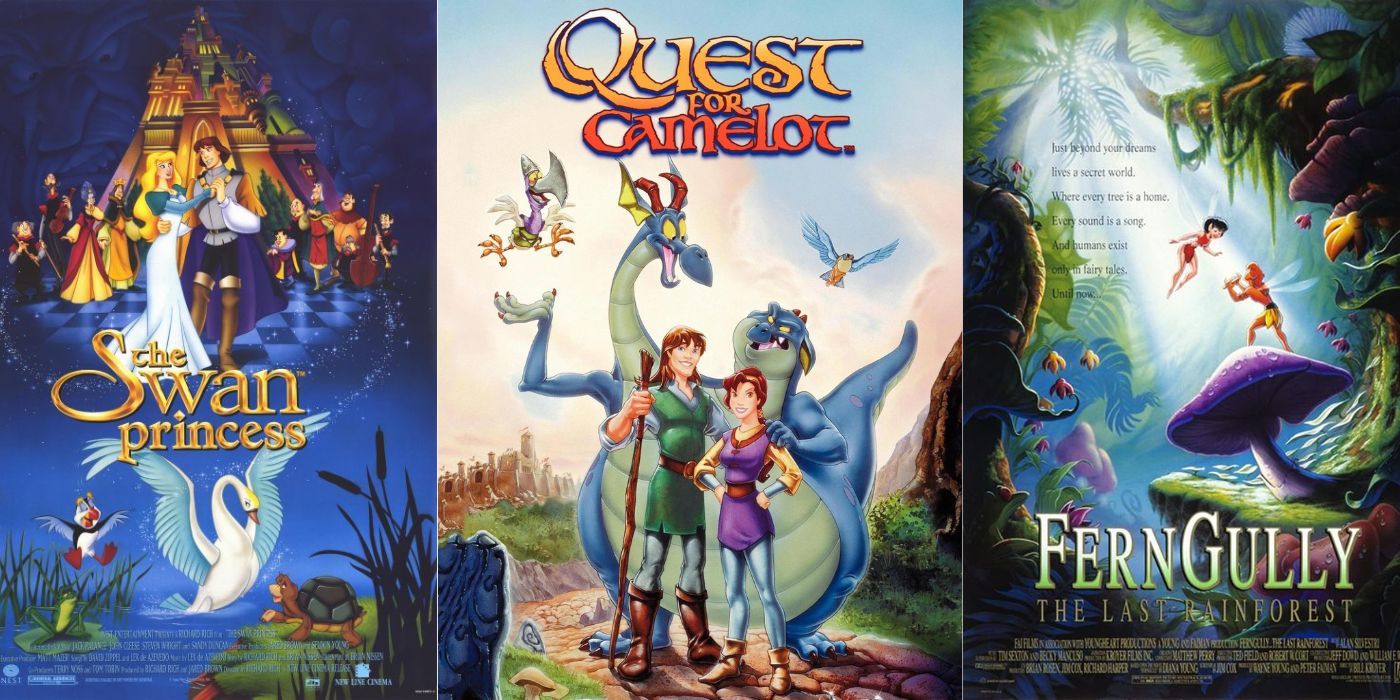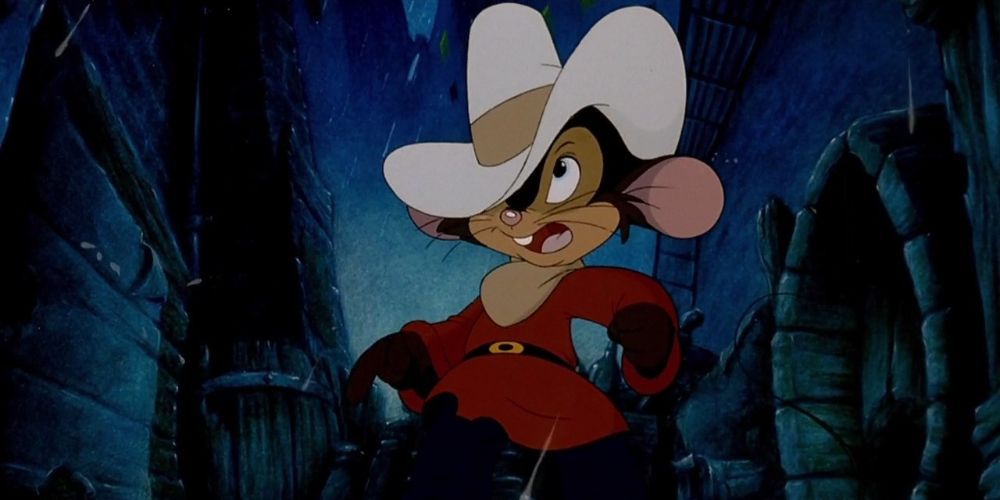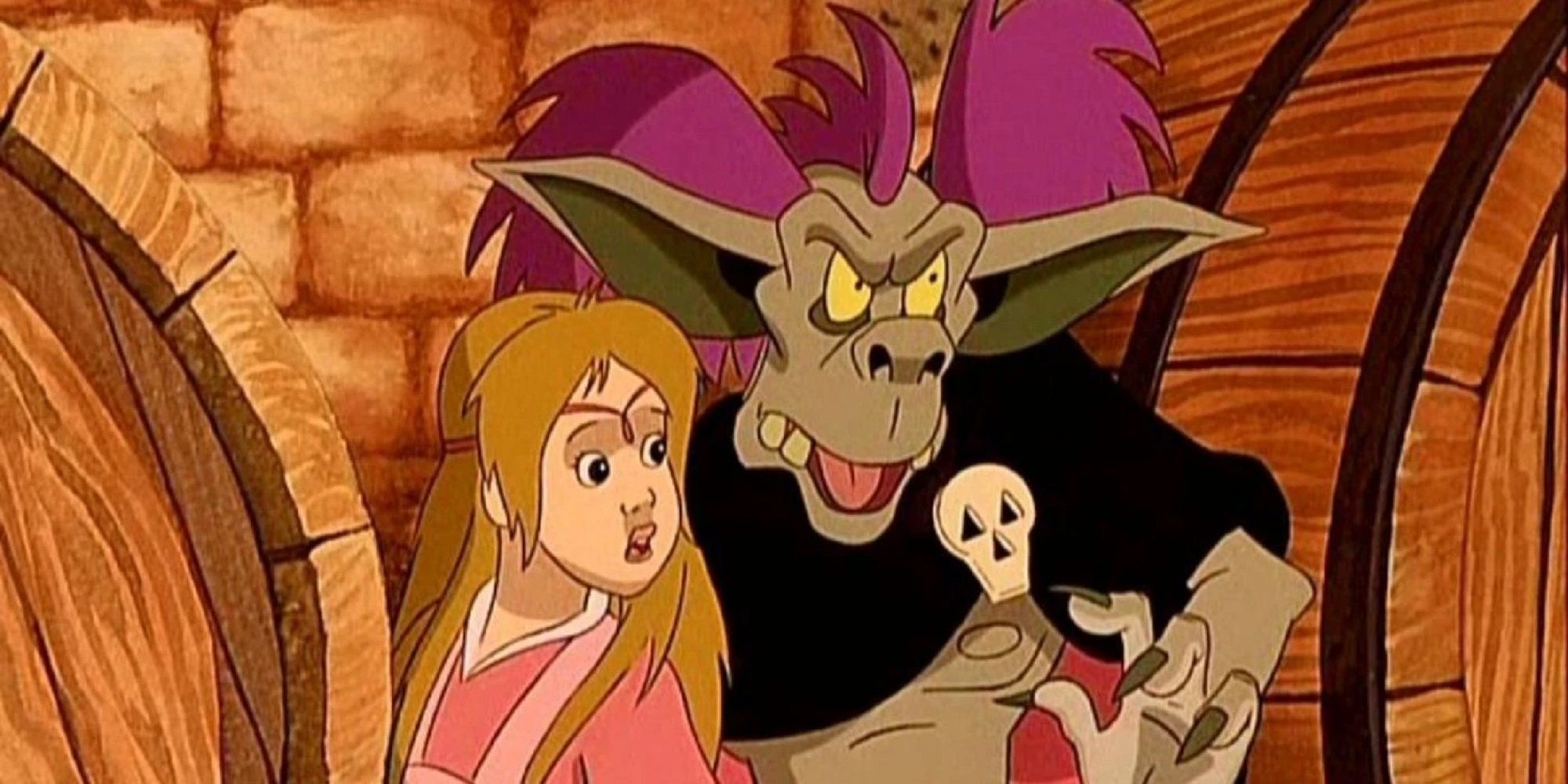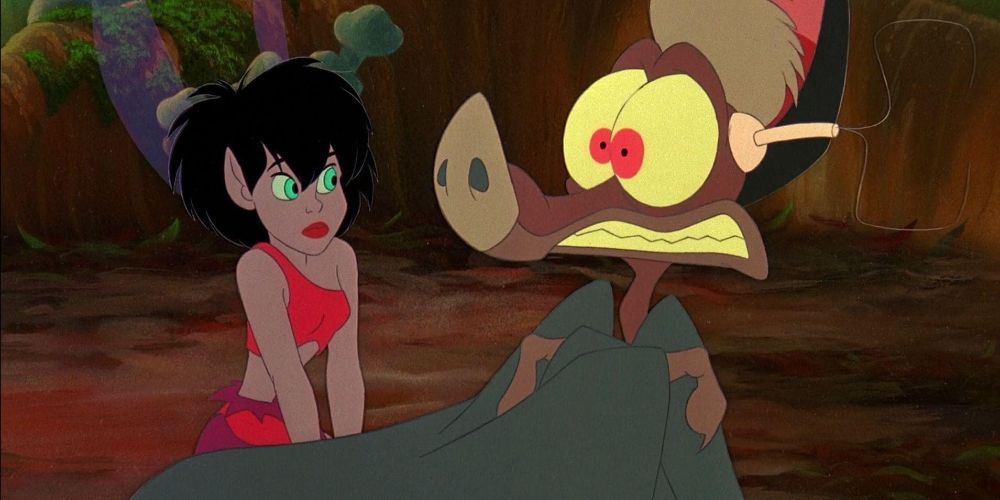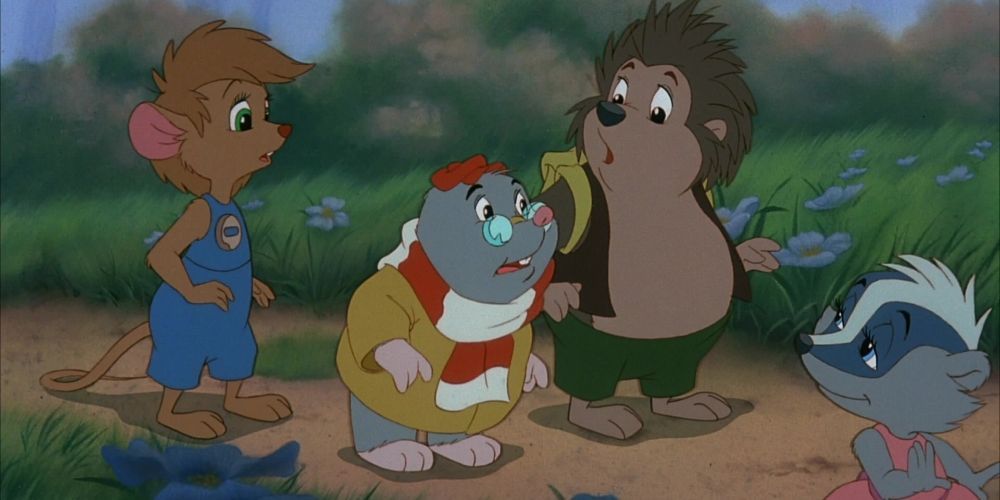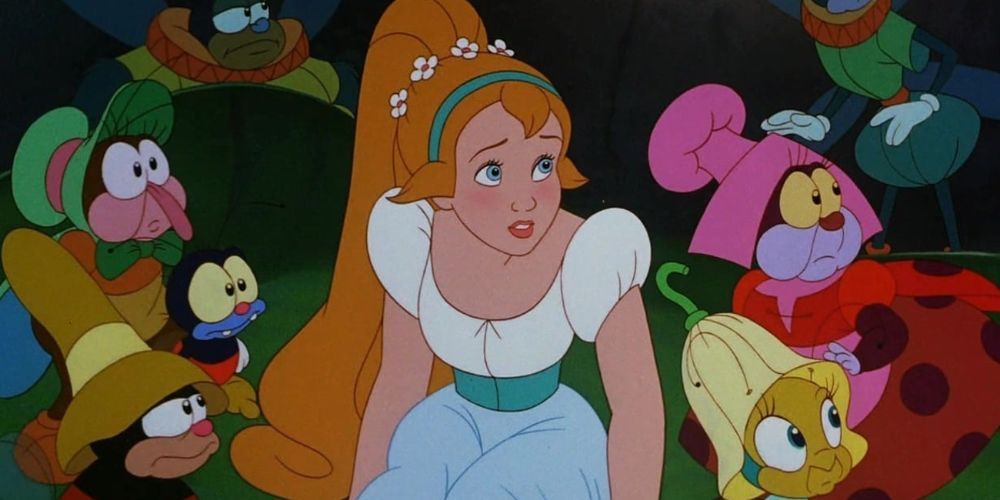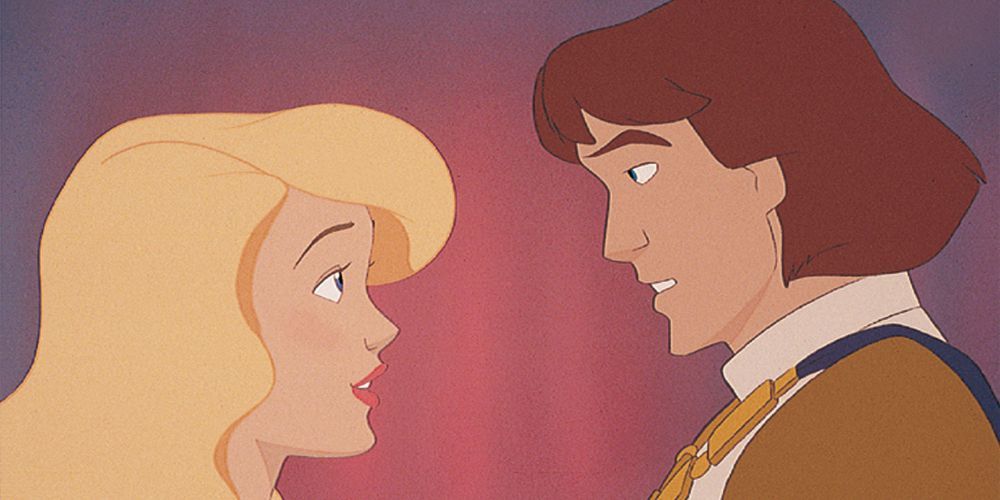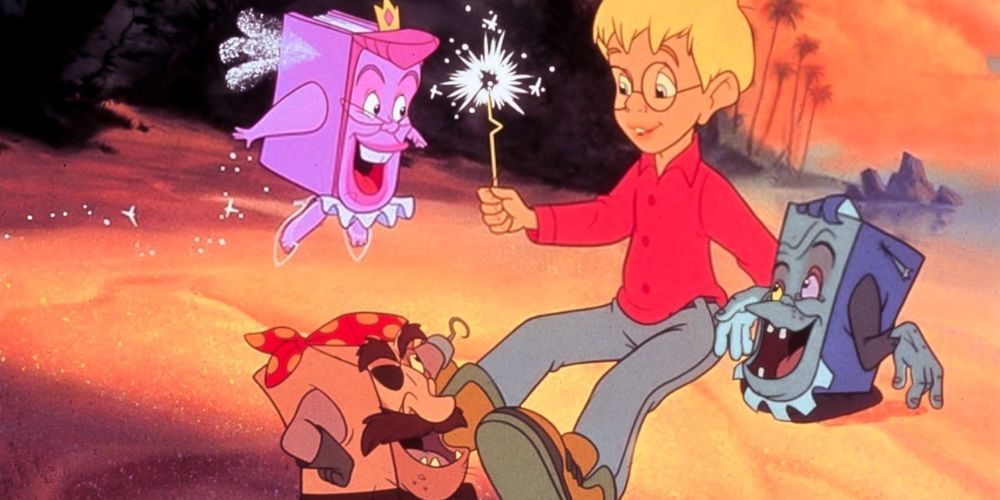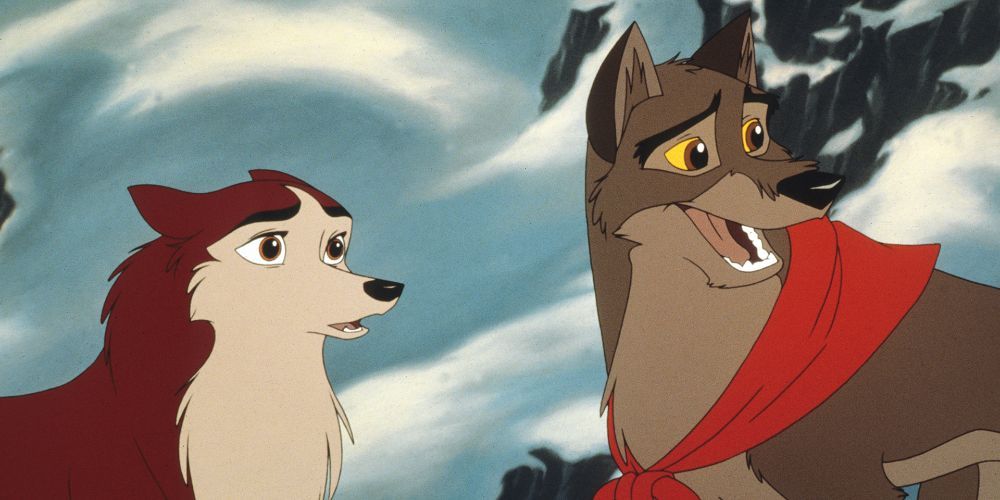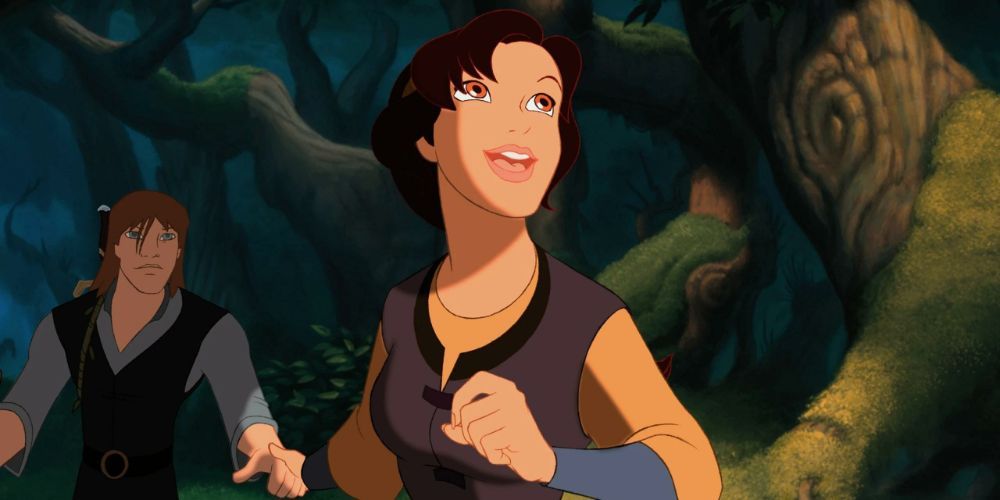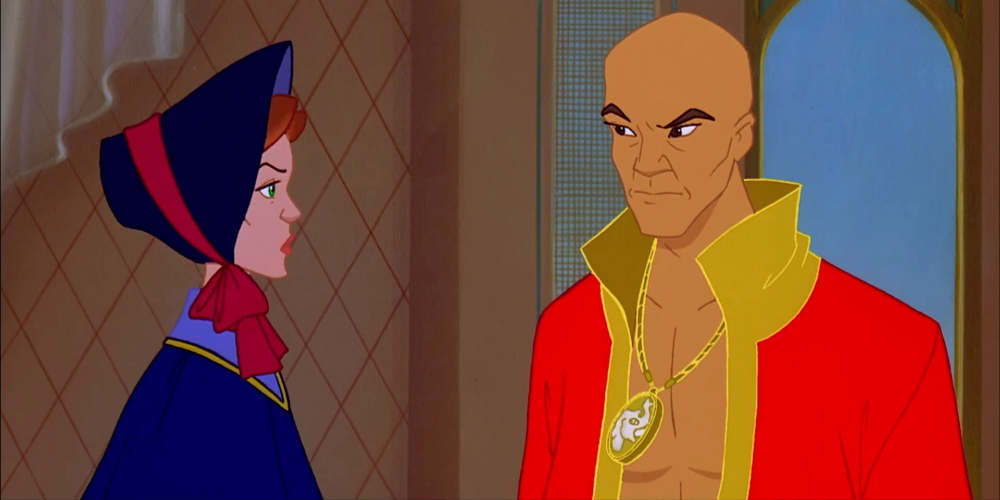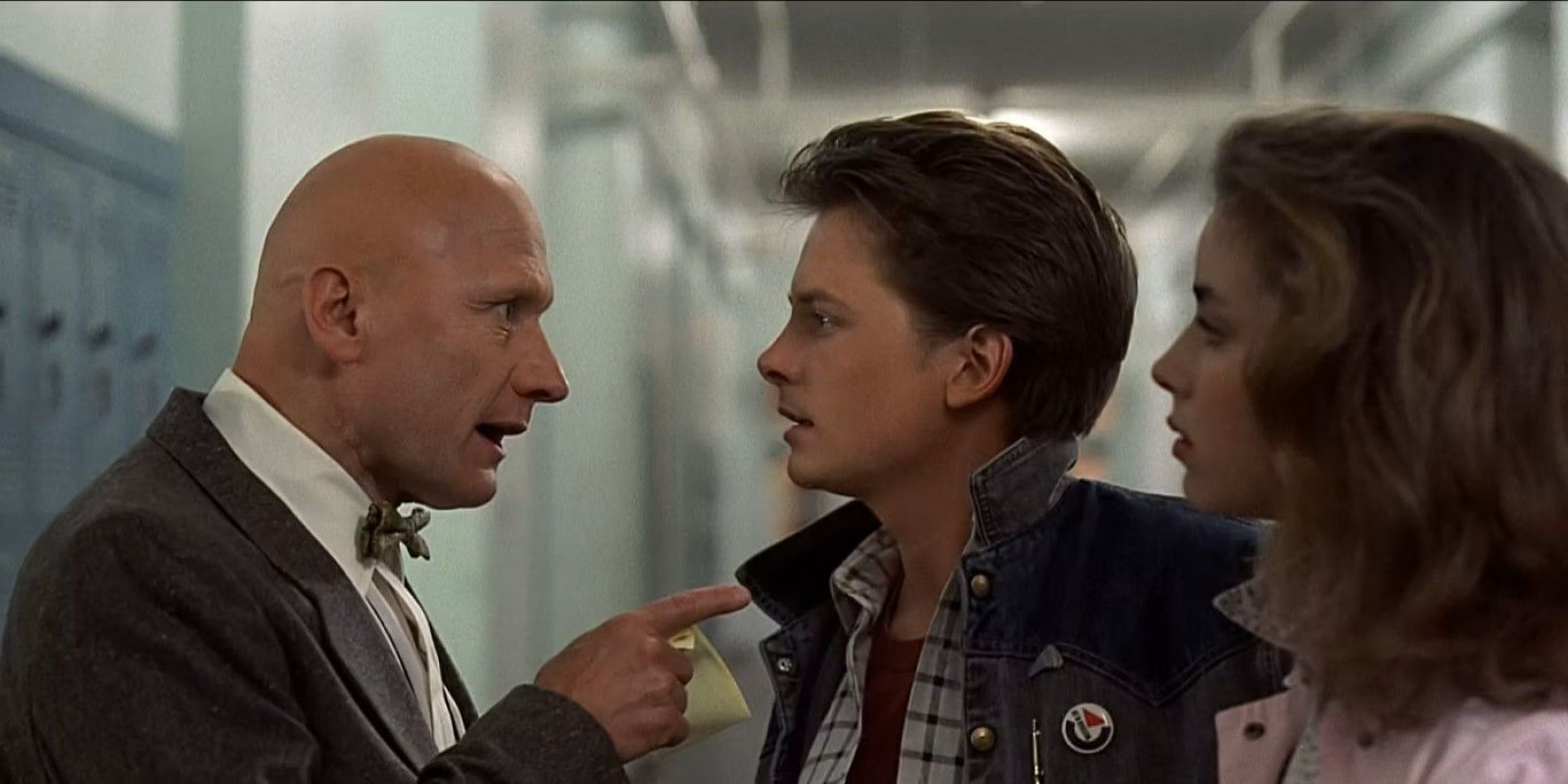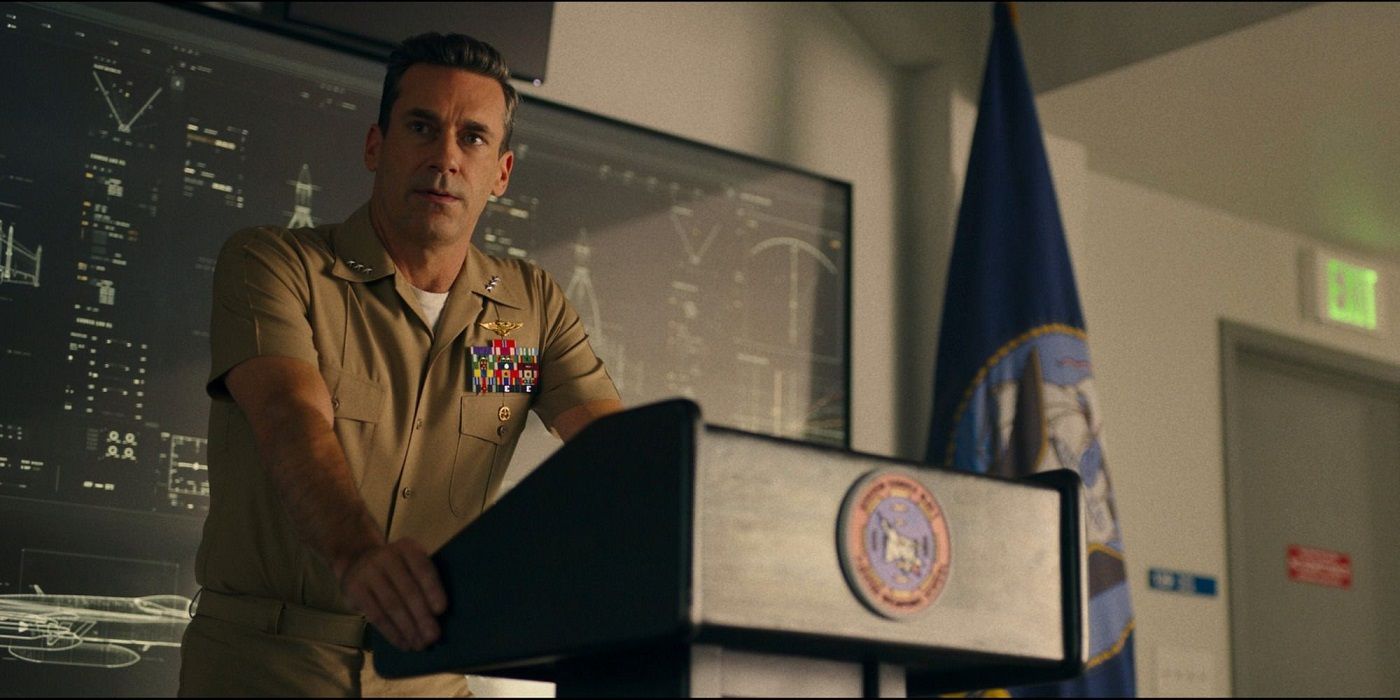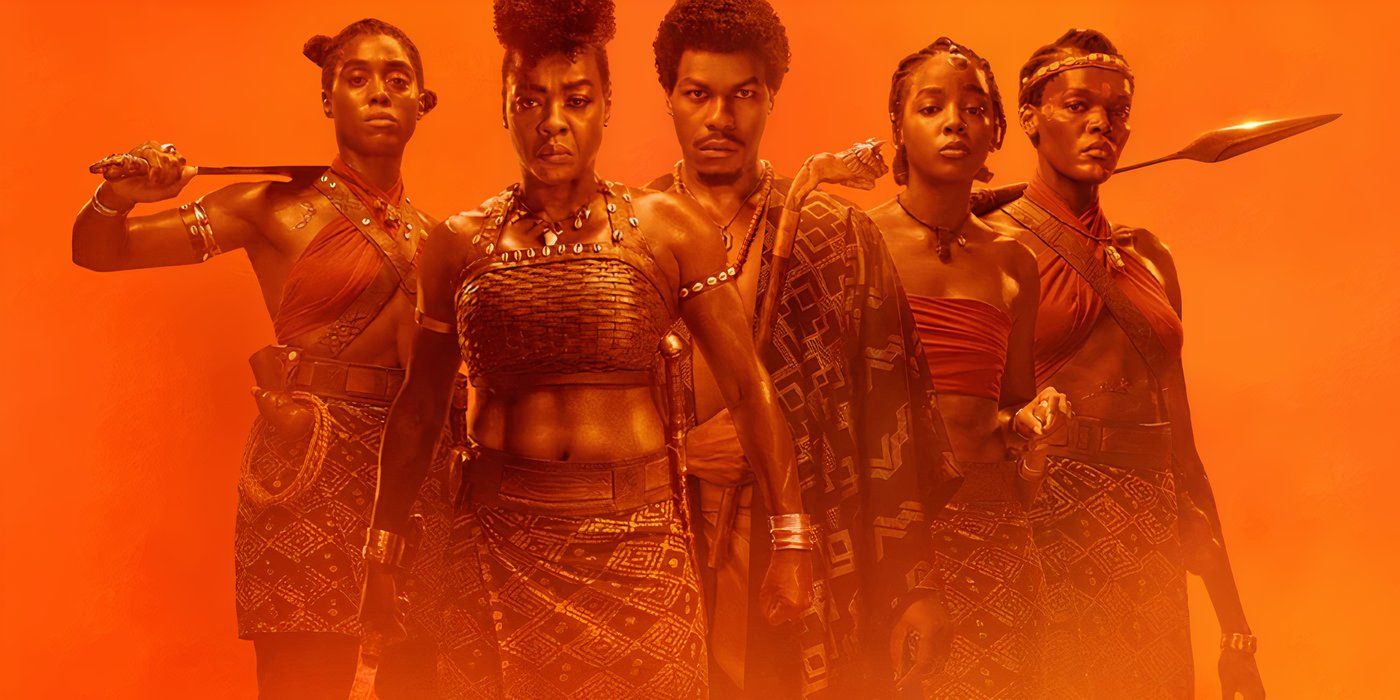The release of The Little Mermaid in 1989 would bring Disney animation into a golden age called the Disney Renaissance. For the next decade, Disney’s movies would define animated musicals and dominate both the box offices and Academy Awards. Their success was so staggering that other companies were quick to release their animated films to share in it.
While it was wonderful to have dozens of new animated features across the 90s, many of them don’t hold up compared to the ones from Disney. One reason is that they tried too hard to copy Disney’s formula, which left them little room for their own imagination.
‘An American Tail: Fievel Goes West’ (1991)
The sequel to Steven Spielberg and Don Bluth’s story about a family of Jewish mice immigrating to America now sees them traveling out west for a better life. The son, Fievel, is once again on his own after overhearing a plot by cats to exploit the mice for labor before eating them. As he tries to warn his family, he also meets an old gunslinging legend voiced by James Stewart.
The film’s biggest problem is that it trades the profound glimpse into the lives of immigrants for a more traditional kids’ story. It replaces scenes of immigrants being exploited and orphan kids forced into sweatshops for western clichés and comedic villains, including a spider cowboy played by John Lovitz. Even the animation is a step-down, swapping Bluth’s unique detail and movement for something much closer to Disney’s style.
‘The Princess and the Goblin’ (1991)
Based on George Macdonald’s book of the same name, the movie follows Princess Irene as she befriends a boy named Curdie after he saves her from goblin-pets. The next day, Curdie spies on the goblins and is captured listening in on their plan to abduct Irene. Aided by her great-great-grandmother’s spirit, Irene rescues Curdie, and together they must convince the king of the threat.
A joint Welsh and Hungarian project, the movie wasn’t released in America until 1994. By that point, Aladdin and The Lion King were out, so the movie was compared to them by western audiences. Sure, there are plenty of animal sidekicks, and it’s a fairytale story starring a princess, but there are worse options out there.
‘Ferngully: The Last Rainforest’ (1992)
In the rainforests of Australia live a colony of fairies. When loggers arrive at their borders, one of them, Crysta, accidentally uses magic to shrink one down to her size. As they go to Ferngully to get help from Crysta’s teacher, the other loggers accidentally release an evil spirit of destruction.
Though Ferngully: The Last Rainforest tells a decent environmental story, it didn’t need to be an animated musical. The songs feel disconnected from the movie, and only three are sung by the characters. Of these, the villain song is the only one worth mentioning, as Tim Curry is a very good choice for a diet-Disney villain.
‘Once Upon a Forest’ (1993)
An accident on the highway unleashes toxic gas into the nearby woods. A young badger named Michelle breaths it in and becomes deathly ill. As her uncle works to keep her alive, her three friends venture outside the woods to find rare herbs, but only if they can dodge predators and the dangers of urbanization.
Once Upon a Forest is almost a halfway decent kids’ movie. The environmental message is handled alright and Phantom of the Opera star Michael Crawford gives a good performance as Michelle’s uncle. It’s held back by its main characters, who feel like someone wanted to make a movie where Disney side characters were protagonists.
‘Thumbelina’ (1994)
Bluth’s first attempt at copying Disney stars Jodi Benson as a thumb-sized girl who falls in love with a fairy prince. She is lost in the garden during a late-night flight and tries to make her way home. Unfortunately, every male animal she meets is enraptured by Thumbelina’ and seeks to marry her.
As if casting Ariel’s voice actor as a curious red-head with singing talents wasn’t obvious enough, the movie’s romance and musical numbers exist because it worked for Disney. The fairy prince is as under-developed as the prince from Snow White and the Seven Dwarfs, and none of the songs are good despite coming from Barry Manilow.One of them, “Marry the Moel,” made Thumbelinathe first animated movie to win a Razzie.
‘The Swan Princess’ (1994)
From their childhood, Prince Derek and Princess Odette were promised to one another. However, Odette is kidnaped by an evil sorcerer who wants her father’s kingdom. As Derek tries to find her, the sorcerer turns Odette into a swan to coerce her into marrying him.
Director Richard Richgot his start working at Disney, and it shows. The movie has everything you can expect from a Disney ripoff, including a romance between a prince and a princess, musical numbers, anachronistic jokes, and animal sidekicks. Due to a re-release of The Lion King, the film bombed at the box office but sold well enough on home video to spawn eight direct-to-video sequels.
‘The Pagemaster’ (1994)
Young Richard Tyler, who is overtly cautious and obsessed with statistics, gets trapped in a library during a storm. While looking for a telephone, he is swallowed by a sea of paint, becoming an illustration. With three anthropomorphic books that represent adventure, horror, and fantasy, Richard searches for a way home while also discovering his courage.
A noble attempt to get children invested in reading, the movie suffers from a dull paint-by-numbers script and too many ideas fighting for time. Richard and his friends meet many famous literary characters, but they come and go so quickly that there’s no time to explore their personalities or themes. Fortunately, the three book characters are among the better Disney side-kick clones, thanks entirely to the voice work by Patrick Stewart, Whoopi Goldberg, and Frank Welker.
‘Balto’ (1995)
Semi-based on real events, Balto tells the story of a wolf-dog hybrid living in Nome, Alaska. When cases of diphtheria erupt among the town’s children, a team of sled dogs is sent to retrieve antitoxin to save their lives. Though despised by dogs and humans, Balto goes to help when the team is caught in a blizzard.
Almost all of Disney’s 90s protagonists were outsiders, which is likely why Balto was changed from a purebred Siberian Husky to a wolf-dog. While it makes for a better character story, Beauty and the Beast and Aladdin were released by this point, so audiences had better options. Still, the animation is pretty, and Disney-veteran Jim Cummings does a good job voicing the film’s villain.
Quest for Camelot (1998)
The Kingdom of Camelot is thrown into ruin when a griffon steals Arthur’s sword, Excalibur. However, it is lost within the Forbidden Forest, so a young woman named Kayley sets off to find it. She is joined by a blind hermit and a two-headed dragon in the quest to save the kingdom and prove that anybody can be a knight.
Quest for Camelot is a tapestry of Disney clichés pulled from better movies. The main character’s design is a ripoff of Bell, the humor relies on meta-references like Aladdin, and the musical numbers, while decent in isolation, try to mimic the scale of Howard Ashman and Alan Menkin. Indeed, the most long-lasting thing about the film is its song, “The Prayer,” which has been covered by several singers, including Celine Dion and Josh Groban.
‘The King and I’ (1999)
Richard Rich joins forces with Quest for Camelot writers Jacqueline Feather and David Seidler to bring the Rodgers and Hammerstein play of the same name to younger audiences. Based on the notes of English schoolteacher Anna Leonowens, it details her journey to Siam and meeting with king Mongkut. As she tries to educate the king’s children, the evil prime minister of Siam uses his powers of illusions to cause conflict in the hopes of seeing the king deposed as a tyrant.
Besides sub-par writing and character work, the film is bloated with cute animal sidekicks, including a monkey, a baby elephant, and a panther who help save the day. It also suffers from having to tone down many of the mature elements from the original play and 1954 movie, including a happy ending instead of the bittersweet one.





































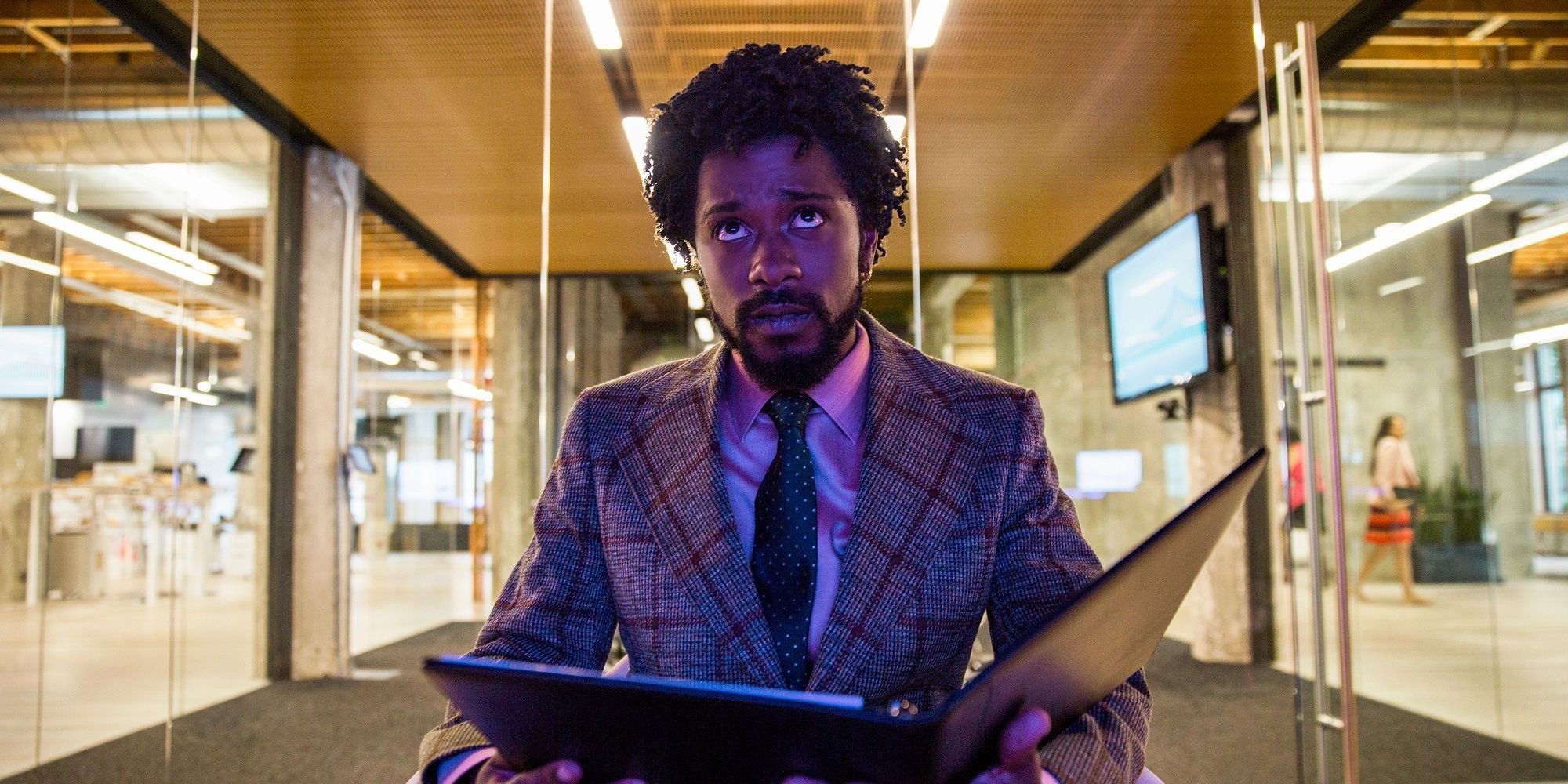





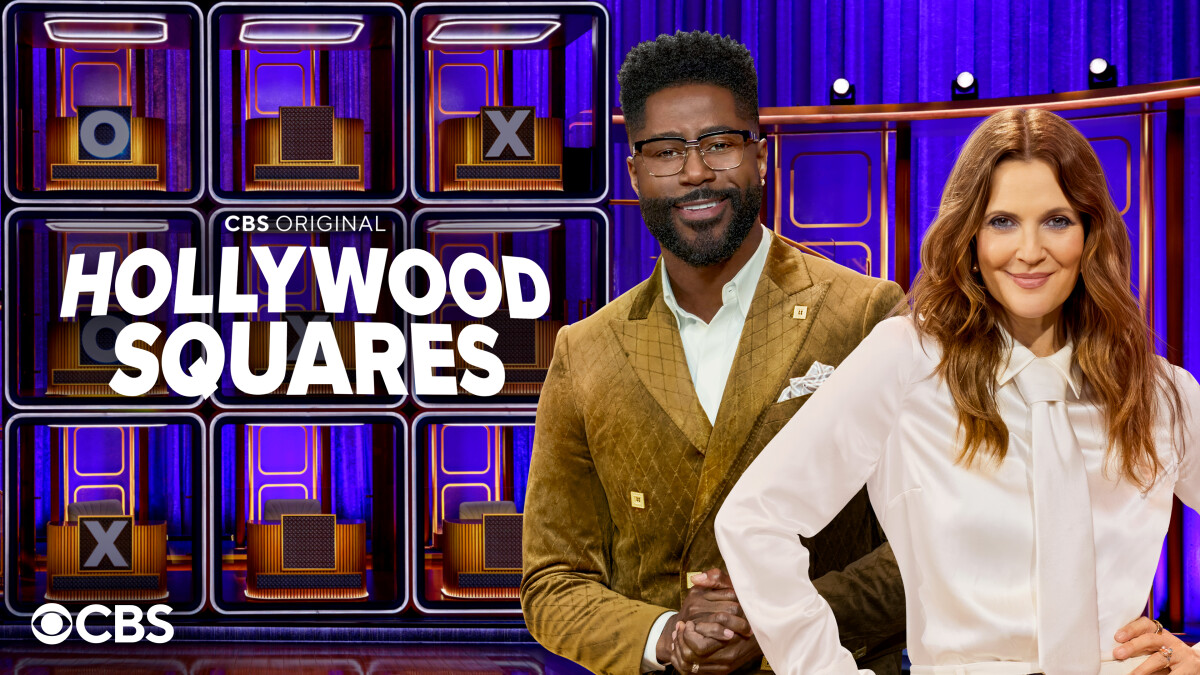











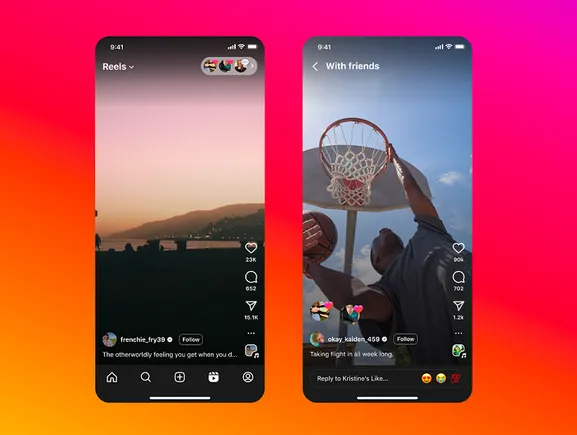

![Social Media Spring Cleaning [Infographic] Social Media Spring Cleaning [Infographic]](https://imgproxy.divecdn.com/9e7sW3TubFHM00yvXe5zvvbhAVriJiGqS8xmVFLPC6s/g:ce/rs:fit:770:435/Z3M6Ly9kaXZlc2l0ZS1zdG9yYWdlL2RpdmVpbWFnZS9zb2NpYWxfc3ByaW5nX2NsZWFuaW5nMi5wbmc=.webp)
![5 Ways to Improve Your LinkedIn Marketing Efforts in 2025 [Infographic] 5 Ways to Improve Your LinkedIn Marketing Efforts in 2025 [Infographic]](https://imgproxy.divecdn.com/Hv-m77iIkXSAtB3IEwA3XAuouMwkZApIeDGDnLy5Yhs/g:ce/rs:fit:770:435/Z3M6Ly9kaXZlc2l0ZS1zdG9yYWdlL2RpdmVpbWFnZS9saW5rZWRpbl9zdHJhdGVneV9pbmZvMi5wbmc=.webp)


